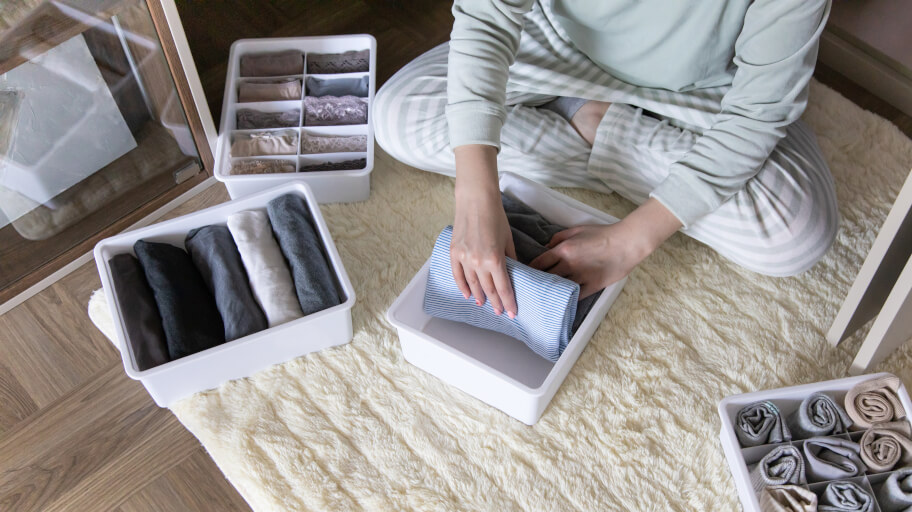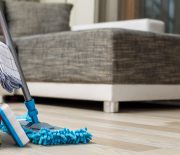Last update: 2 years ago

Spring cleaning, a term that rings a bell for many, is a tradition rooted deeply in our collective history. It represents a thorough cleaning of the house, traditionally undertaken in spring. The purpose? To shake off the winter gloom and welcome the rejuvenating spirit of spring.
But what about our friends down under? Interestingly, in Australia, spring cleaning doesn’t necessarily align with the spring season. The magic of spring cleaning is that it’s more about the act itself rather than the time of year. So, even though Australians experience spring in September, the concept remains the same. Whether it’s spring or autumn, it’s all about decluttering, deep cleaning, and refreshing your living space.
And there you have it – the essence of spring cleaning. Now, let’s delve deeper into why it’s a tradition worth keeping.
Benefits of spring cleaning
The tradition of spring cleaning harks back to times when homes were lit by oil or kerosene lamps, and heated with wood or coal throughout the bitter winters. Come spring, the house would be grimy and sooty. The warmer weather provided the perfect opportunity to open windows and doors and clean the house from top to bottom.
Spring cleaning goes beyond merely dusting off shelves or scrubbing floors. It’s an act of renewal, a complete refresh that brings with it a host of benefits for our physical health and mental wellbeing. Let’s take a look at some the advantages you get out of spring cleaning:
- Significantly improves physical health and hygiene. A cleaner home leads to a healthier you. Organise your space, declutter your surroundings, and thoroughly clean those often overlooked nooks and crannies to tackle dust, allergens, and bacteria that can contribute to various health concerns.
- Profoundly impacts stress and anxiety levels. Decluttering holds a therapeutic essence. It’s as though, with each item you organise, you’re also decluttering your mind. Well-organised spaces have the power to reduce stress and anxiety, helping you achieve the sought-after feeling of peace and tranquillity.
- Naturally boosts productivity and focus. A tidy space removes distractions and helps your mind concentrate on your tasks. When doing important work or pursuing a beloved hobby, a neat environment enhances your focus and productivity.
Spring cleaning is a holistic approach to improving your health, reducing stress, and enhancing productivity. So, roll up your sleeves, grab that mop, and embrace the transformative power of spring cleaning.
How to start spring cleaning
Starting spring cleaning can seem like a daunting task, but with the right approach, it can be manageable and even enjoyable.
Start with decluttering each room in your house. Separate items into categories: those to keep, those to donate or sell, and those to throw away. Remember to be realistic and only keep items that you use and love. Everything else is just taking up valuable space.
Then, organise the items you’ve decided to keep. Store like items together and use storage solutions to maximise space. Don’t forget to label everything clearly for easy access in the future.
Following this process ensures your space is optimised for efficiency and ease of use, making your day-to-day life simpler. From that point onward, you can start creating a checklist for cleaning each area of your home separately.
Living room spring cleaning
To restore your living room’s previous shine, start by cleaning dust:
- Begin dusting from the top of the room, working your way down.
- Dust surfaces such as ceiling fans, window casings, and other hard-to-reach areas.
- For books and bookshelves, remove everything from the shelves and dust them along with the books using a feather duster.
- Use a vacuum’s dust brush or crevice tool to reach into tight spots.
- Wipe the spines of leather-bound books with a clean, soft cloth.
- Take cushions outside and gently beat them by hand to remove dust.
After you finish dusting – vacuum it up:
- Use a vacuum to thoroughly clean all the floors, including carpets, rugs, and hard floors.
- Pay attention to areas where dirt and crumbs tend to accumulate, such as under furniture and in corners.
- Use a mop with a gentle floor cleaner to give your flooring a neat finish.
Before you clean the floor you might have to wash your carpeting and clean upholstered furniture.
Synthetic carpets and rugs with waterproof backings can be cleaned in various ways such as using a rotary shampoo machine and a hot-water extraction machine. Rugs without backings, such as Oriental rugs, may require professional carpet cleaning services.
Since industrial cleaning equipment is not a household staple – you might have to call someone. They can probably do your furniture, too!
Decluttering the bedroom
To start off on cleaning your bedroom:
- Deep clean your mattress
- Vacuum the surface of your mattress to remove any dust and debris.
- Treat any stains with a suitable stain remover and allow it to sit for a few minutes.
- Use a mattress cleaner or a mixture of mild detergent and water to clean the surface.
- Let the mattress air dry before making the bed.
- Wash your bedding
- Remove all bedding, including sheets, pillowcases, and duvet covers.
- Check the care label on your pillows for washing instructions.
- Use a mild detergent and add an extra rinse cycle to ensure all soap is removed.
- Fluff and reshape the pillows before placing them back on the bed.
- Declutter your closet and dresser
- Sort through your clothing, shoes, and accessories.
- Donate or discard items you no longer wear or need.
- Organise your closet and dresser by grouping similar items together.
- Utilise storage solutions, such as bins or dividers, to keep items organised and easily accessible.
- Clean blinds, shades, and curtains
- Dust or vacuum blinds using a soft brush attachment, if you have one.
- For curtains, check the care label and follow the recommended cleaning method.
Rejuvenating the dining room
Cleaning your dining room is quite similar to cleaning your living room. Dust tables, chairs, shelves, and decorative items in the dining room using a microfiber cloth or feather duster. Pay attention to corners and hard-to-reach areas.
- Cleaning the table – Clear the table and wipe the surface with a damp cloth and suitable cleaner. Address any stubborn stains gently with a non-abrasive sponge or cloth. Dry the table thoroughly to prevent water spots. If your dining table is made of wood – use furniture polish or wax to buff it. Follow the manufacturer’s instructions and buff the surfaces until they gleam.
- Laundering table linens – Wash tablecloths, placemats, and napkins according to the care instructions. Use a suitable detergent, remove any stains if necessary, and iron or steam them for a crisp and fresh look.
- Decluttering – Take the time to declutter any unnecessary items in the dining room. Remove items that don’t belong and find appropriate storage. Organise dining room essentials, such as serving dishes or tableware, in designated cabinets or drawers.
Spring cleaning the kitchen
Countertops and surfaces – Wipe down countertops, stovetops, and other surfaces using a mild cleaner or a mixture of dish soap and water. Remove any grease, spills, or stains. Pay special attention to high-touch areas like handles and knobs.
Kitchen appliances – Use a degreasing agent or a mixture of vinegar and water to clean the exterior of appliances like your oven, microwave, refrigerator, and dishwasher. Remove any food residue, fingerprints, or grime. Check the manufacturer’s instructions on any appliance you haven’t cleaned before to make sure you don’t miss an important warning.
The sink – Scrub the kitchen sink with a non-abrasive cleaner or a mixture of baking soda and water to remove stains, mineral deposits, and buildup. Use a toothbrush or small brush to clean hard-to-reach areas around the faucet and drain. Rinse the sink thoroughly and wipe it dry to prevent water spots.
Fridge and freezer cleaning:
- Remove food and beverages from the refrigerator and empty the freezer.
- Discard any expired or spoiled items.
- Wipe down the shelves, drawers, and walls with a mixture of mild detergent and water.
- Use a cloth or sponge to clean the door seals and handles.
- Once clean, place the food items back in an organised manner.
Cleaning the kitchen floor
- Sweep or vacuum the kitchen floor to remove loose dirt and debris.
- Then, mop the floor with a suitable cleaner, paying attention to any spills or stains.
- Ensure the floor is thoroughly dry to prevent slips or falls.
- Consider sealing or waxing the floor for added protection.
Keeping hallways clean
While you’re on your spring cleaning journey you shouldn’t forget your hallways!
- Depending on the type of flooring you have, vacuum, sweep, or mop it to keep it clean and free from dirt or stains. Use appropriate cleaning products based on the flooring material.
- Wipe down the walls and baseboards using a damp cloth or sponge. Remove any scuff marks or stains. Consider using a mild cleaner for stubborn marks.
- Dust light fixtures and any decorative items in your hallways. Use a microfiber cloth or a feather duster to remove dust and cobwebs.
- Find suitable storage solutions for shoes, coats, bags, or other belongings to maintain an organised space.
Attic spring cleaning
Your attic is an important, yet often overlooked part of your home. Follow our instructions to add it to your spring cleaning checklist:
- Dust and vacuum – Clean all surfaces in your attic, including beams and rafters. Use a vacuum with a brush attachment or a broom to remove dust and cobwebs from corners and hard-to-reach areas.
- Inspect for pests – You should be inspecting your attic for signs of pests on a regular basis. Contact a professional pest control service to address any infestations or discuss prevention measures if you need to.
- Organise storage – Keep your attic organised by categorising stored items and using labels on bins and boxes.
- Check for leaks or moisture – Inspect your attic for any signs of moisture. Address issues promptly to prevent water damage or mould growth. Proper insulation and ventilation are a must when you want to maintain a dry environment.
- Clean air vents and filters – Clean or replace air vents and filters to improve air circulation and prevent dust buildup. This is especially important if your HVAC system or air ducts pass through your attic.
Laundry room organising
Washer and dryer
- Regularly clean the inside of the washing machine and dryer.
- Run self-cleaning cycles or use a suitable cleaning agent to remove dirt, grime, and detergent buildup.
- Wipe down the exterior surfaces as well.
Laundry supplies
- Keep laundry supplies, such as detergent, fabric softener, and dryer sheets, organised and easily accessible.
- Use storage bins or shelves to maintain a clutter-free space.
Clean floors
- Sweep or mop the floors in the laundry room to remove lint, dust, and debris.
- Pay attention to corners and hard-to-reach areas.
- Consider using a damp mop for thorough cleaning.
Bathroom sanitisation
Spring cleaning your bathroom is probably the simplest job on our list:
- Dispose of expired medications, old toiletries, and empty bottles.
- Organise your towels and toiletries in designated areas or storage containers.
- Clean and declutter the bathroom cabinets and drawers, discarding any outdated or unused items.
- Wipe down surfaces with an antibacterial cleaner.
Decluttering the basement
Declutter the basement by removing any unnecessary items. Donate or discard items you don’t need anymore. Then, dust all surfaces, including shelves, furniture, and stored items. Depending on the type of flooring, mop or deep clean it as needed. Wipe down the walls with a damp cloth to remove any dust or stains.
Moving on, inspect the basement for any signs of moisture or leaks. Address any water issues promptly and consider installing a dehumidifier if the basement tends to be damp.
Last, but not least, if your HVAC system is in the basement – make sure it’s in top condition. Inspect and change the filters(if necessary) or schedule professional maintenance to ensure optimal performance and air quality in your basement.
Eco-friendly spring cleaning tips
Spring cleaning is not just about tidying up our spaces; it’s also a chance for us to show love and care for the environment. Each small action we take, like choosing natural cleaning products, recycling unwanted items, and conserving water, adds up to a big impact.
So, let’s discover some fantastic eco-friendly tips that will make your spring cleaning journey even more special and planet-friendly:
- Use natural cleaning detergents instead of harsh chemicals.
- Recycle items you don’t want instead of throwing them away.
- Try not to waste paper. Use reusable cloths and don’t print too much.
- Use reusable cleaning tools good for the Earth.
- Remember to turn off lights and unplug appliances when you’re not using them to save energy.
Takeaways
- Make a decluttering checklist for a simplified spring cleaning.
- Refresh fabrics with green cleaning methods for a healthier environment.
- Prioritise well-being and avoid overworking during spring cleaning season.
- Consider eco-friendly professional cleaners for efficient and sustainable results.
Feeling overwhelmed by cleaning? Let us handle the dirty work!
Relax and enjoy a sparkling home. Book spring cleaning now!
We’d love to hear about your spring cleaning journey. Leave a comment to let us know how it went!








